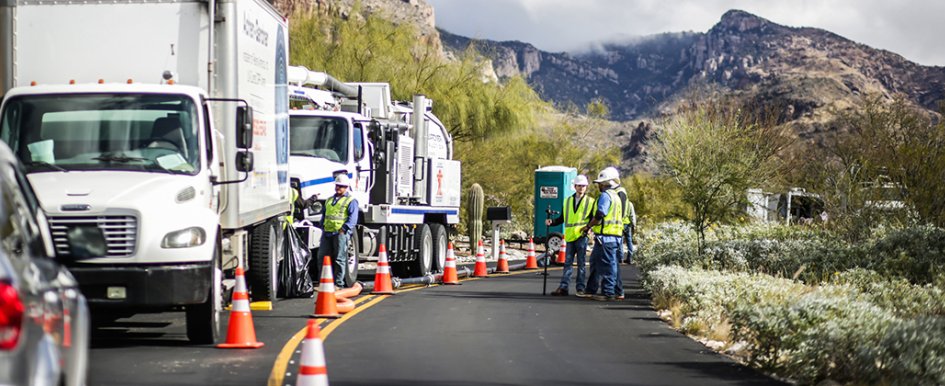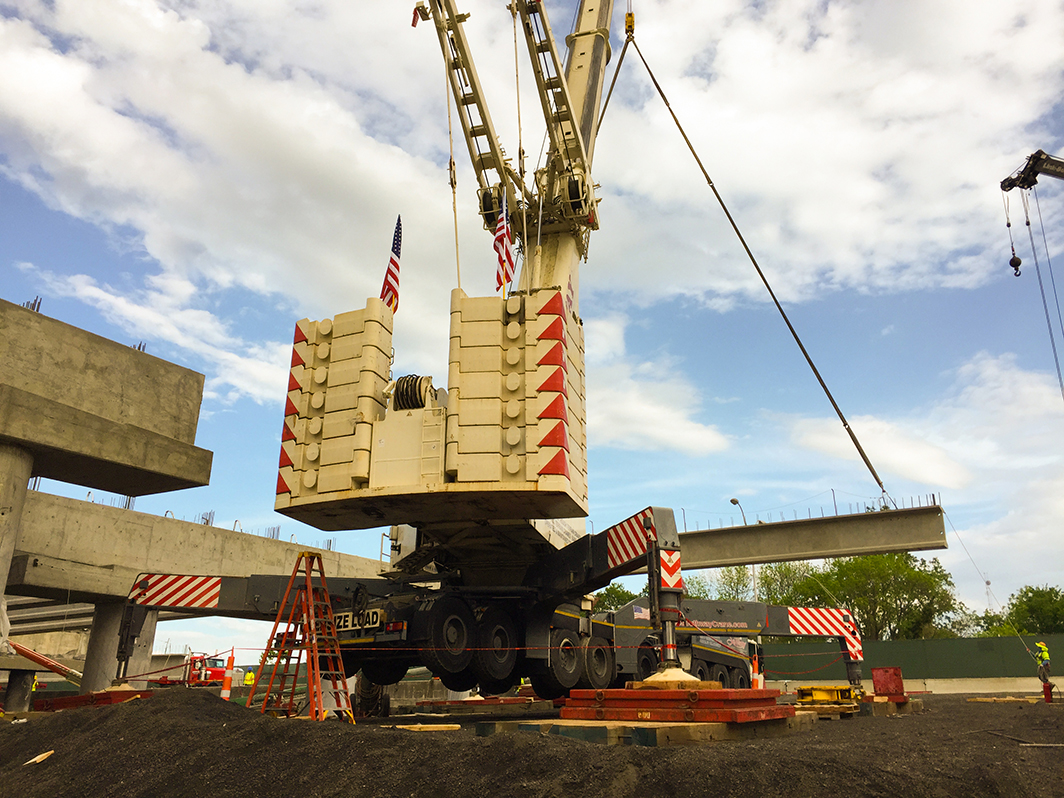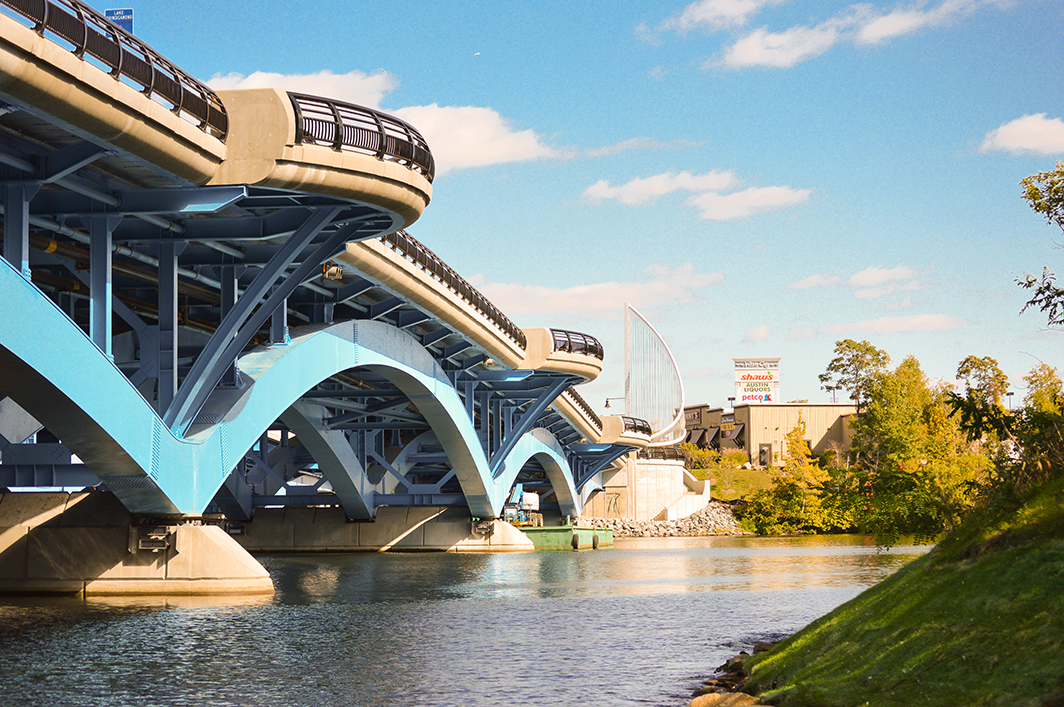
It’s said that beauty is in the eye of the beholder. When it comes to the construction industry’s positive impact on the lives of Americans, Mike Rydin, founder and CEO of HCSS, a construction industry software company, sees undeniable beauty. “Infrastructure is how we move, and [it is] essential to the growth of our nation,” said Rydin. “The construction industry makes it possible for communities to have drinking water, constructs cell towers to improve communication and builds the roads, rails and airports that move people and goods from point A to B.”
Most of the public’s viewpoint of the construction industry is shaped by delays: orange barrels on the interstate, restricted travel lanes over a bridge or a detour due to reconstruction. Rydin sees this as a perception problem, and the construction industry has not done itself justice by underselling its importance. The drive to change the public’s perception is at the heart of the I Build America (IBA) campaign, formally started by Rydin in 2016. IBA’s mission is to generate the pride and respect the construction industry deserves. IBA has three objectives:
- Build pride in the work that contractors complete
- Educate the public to recognize the value that the men and women in construction bring to modern life
- Serve as a recruitment tool for the next generation of workers
“Millennials want [to do] something with meaning, and what could be more meaningful than building America’s infrastructure?” said Rydin. This philosophy is shared by many in the industry, and IBA has formed a sizeable movement with more than 100 founding members, including manufacturers, such as Trimble and Caterpillar, and contractors, such as Granite and C. W. Matthews. The organization is also working with various Associated General Contractor (AGC) chapters. IBA has developed educational programs and presentations targeting young children and high school students, telling the story of the industry’s value to the country.

Impact in Massachusetts
Promoting the stories of how construction projects improve American’s lives is one of the organization’s most effective ways of speaking to the general public. To uncover these stories and recognize contractors at the same time, IBA started its inaugural Impact Awards in 2016, and received over 100 project submissions.
The Kenneth F. Burns Memorial Bridge design-build replacement project in Worcester, Massachusetts, completed by The Middlesex Corporation (TMC) of Littleton, Massachusetts, took top prize in IBA’s 2016 Impact Award contest. The complex, $105 million, high-profile project called for the replacement of a concrete, open-spandrel, arch bridge built in 1916.
The existing bridge remained open throughout construction to reduce impact on the vehicles crossing Lake Quinsigamond between Worcester and the town of Shrewsbury. “The existing bridge had an estimated lifespan of 5 years left when we began the 3.5-year replacement project,” said Evan McCormick, senior project manager for TMC, so there was a sense of urgency to meet the 39-month contract’s August 29, 2015, deadline.
Because Lake Quinsigamond is used for competitive rowing and recreational boating, the project had to accommodate water traffic throughout the construction period, as well as vehicular and pedestrian traffic. With it being such a high-profile location, the Massachusetts Department of Transportation (DOT) and TMC welcomed input from the community and incorporated some of the community’s design suggestions in the structure.
The two new, 870-foot-long bridges, one for eastbound traffic and another for westbound traffic, featured an open spandrel, steel-tied deck arch design that closely mirrored the aesthetic appearance of the existing bridge, which was important to the community. Bridge construction required 4,000 tons of structural steel, 10,000 cubic yards of concrete and 19,000 tons of asphalt. TMC’s workers also excavated 25,000 cubic yards of material.
Wide shoulders were added to both bridges, especially critical with westbound traffic to allow vehicles to move over for ambulance traffic in transit to UMass Memorial Medical Center. The westbound traffic bridge also added a travel lane, easing congestion and improving safety. With bicycle lanes added to the bridges, cyclists no longer had to choose between navigating through pedestrian traffic on sidewalks or braving the narrow shoulder of the previous bridge. Reducing the number of bridge piers to five increased the maximum span distance from 112 to 228 feet, and a rise in the maximum overhead clearance from 18.5 to 23.5 feet offered unimpeded access to the entire lake for a larger class of sailboats. New colored, programmable lighting illuminates the bridges’ undersides, highlighting the structural arches to make a bold statement.

Skip Spann
A Marietta, Georgia, contractor, C.W. Matthews, was recently called on to complete the Skip Spann Connector in Cobb County, Georgia. Dan Garcia, president of C.W. Matthews, credits a longstanding working relationship with the Georgia DOT with winning this particular project.
The need was great for a new connector spanning Interstate 75 near Kennesaw State University (KSU), the second largest advanced educational institution in Georgia. Student housing had migrated eastward from the university’s main campus across I-75, increasing the amount of vehicles, cyclists and pedestrians using the busy I-75 and Chastain Road interchange.
The $17.8 million project, which included building a new bridge spanning I-75, was well received by the public. KSU held a contest for students to submit bridge design ideas. The winning idea included a metal structure to mimic the Kennesaw Mountains, visible in the distance when traveling along I-75 and a part of the KSU logo. Building the new structure required 55,000 cubic yards of grading, 4,000 linear feet of storm drainage, 17,000 feet of curb, 20,000 tons of crusher run aggregate, 14,000 tons of asphalt, 4,000 cubic yards of concrete and 400,000 pounds of reinforcing steel. The 108-foot-wide deck accommodates five traffic lanes and two, 11.4-foot sidewalks to safely allow pedestrians and cyclists to cross. The new structure improved the safety for students crossing I-75 and delivered an expected 19-percent traffic reduction at the congested Chastain Road interchange. The Skip Spann Connector won the American Society of Highway Engineers’ 2017 National Project of the Year Award in the $20 million and under category.
The Kenneth F. Burns Memorial Bridge also received multiple awards, and both projects are the types of stories Rydin says the industry needs to leverage to positively change the public’s perception. “We need to move the needle to where the construction industry is no longer an afterthought for employment, but rather an industry where a person can build a lucrative career,” said Rydin. “People can still start out on the ground floor and work their way up to being CEO in this industry.”
